
“The present defines the future. The future builds on the foundation of the past.”
– LAILAH GIFTY AKITA
MARCH/APRIL 2024
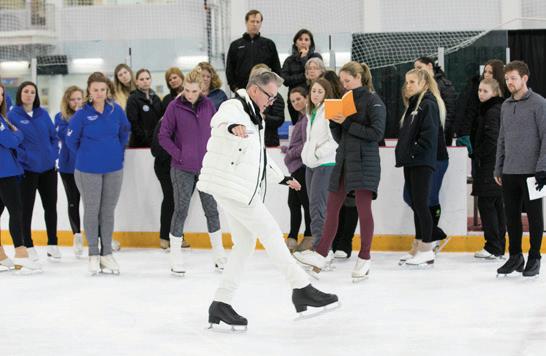




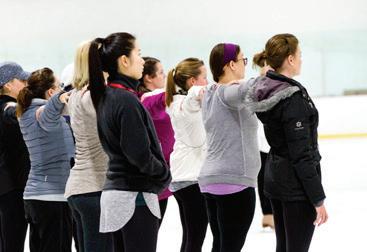
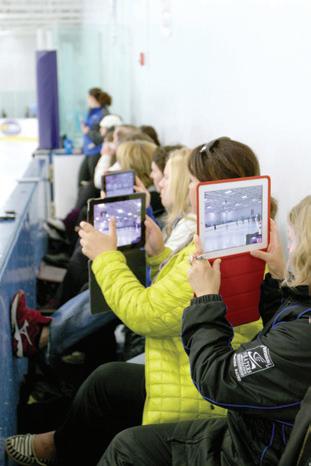
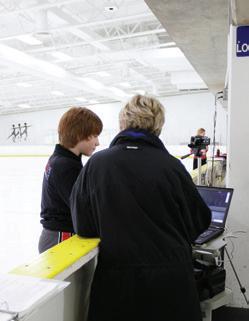

Dedicated to the future, with honor to the past.
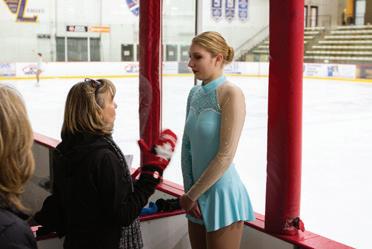
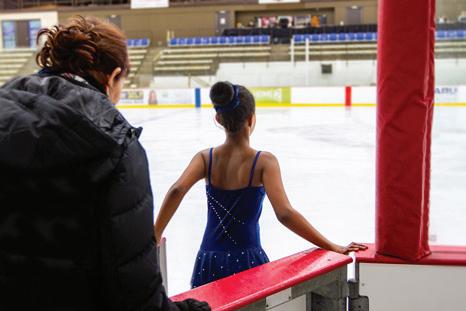
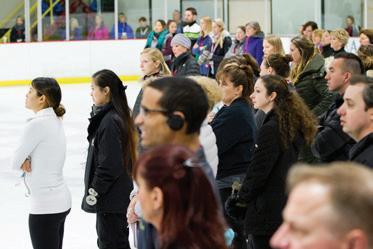




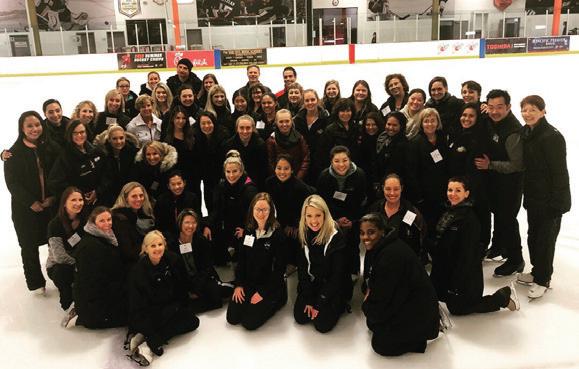
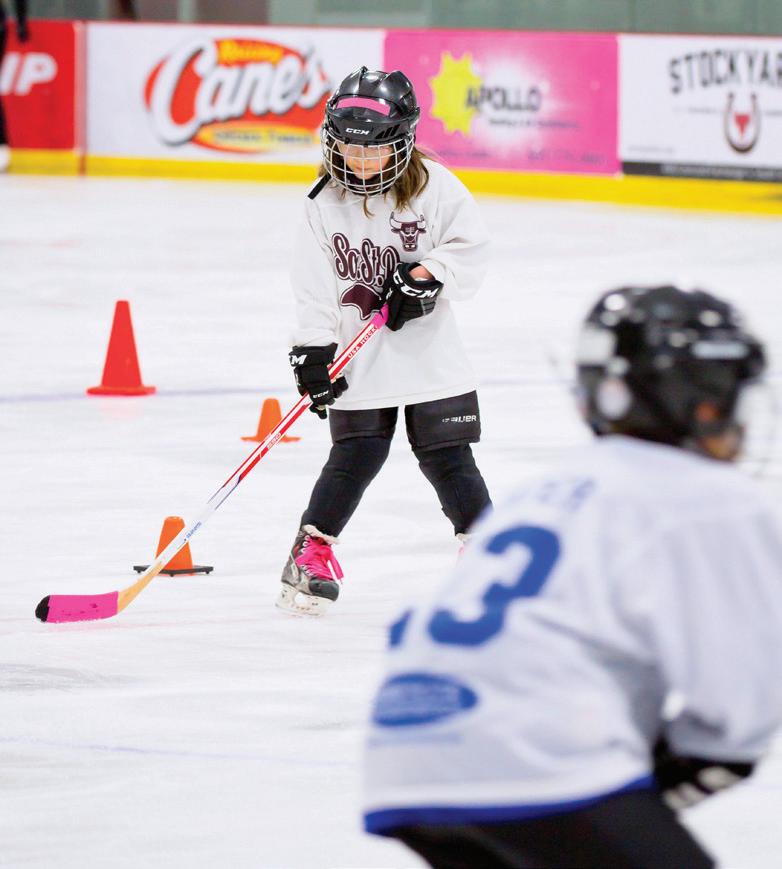
3
4
6


Contents Issue No 5 | WWW .SKATEPSA. COM MARCH/APRIL 2024 Find, Friend, Follow @skatepsa COVER PHOTO BY: Mark Walentiny
Departments
President’s Message
Recognition Ratings & Recognition
Education
Team PSA Calendar of Events New Members Featured 10 Board of Governors Nominees 12 Pathway to Spins 16 The importance of Warming Up PS MAGAZINE 1
20
A rst-of-its-kind fashion skate designed for making magic & memories on the ice.
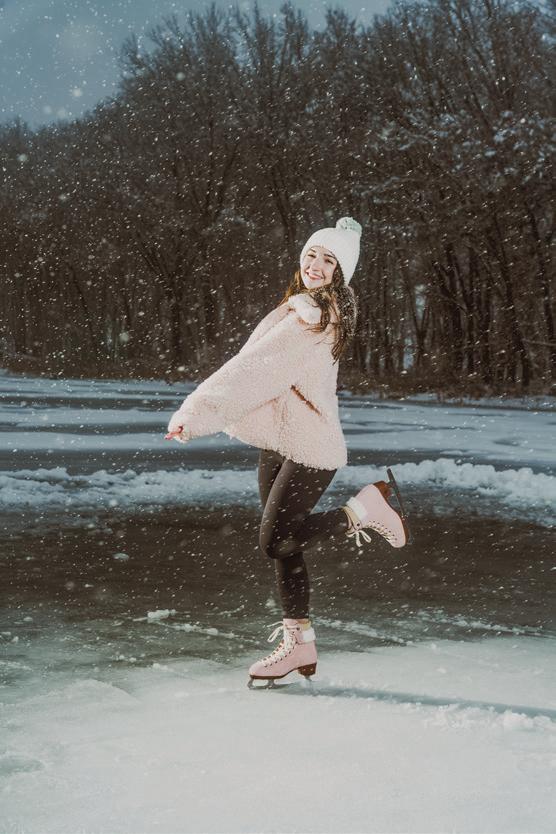
FEATURES
• Unisex sizing and relaxed fit
• Fashionable fold-over design
• Plush sweater-top collar
• Genuine suede leather upper
• No-maintenance outsole
• Stainless steel Luna blade
• Available in sizes 4-10


Shop Ember at ice.riedellskates.com
ICE COLLECTION 2023
PSA OFFICERS
President
First Vice President
Second Vice President
Third Vice President
Treasurer
Past President
PSA BOARD OF GOVERNORS
West
Mid-West East Members at Large
Ratings Chair
Education Chair Events Chair
ISI Rep to PSA
U.S. Figure Skating Rep to PSA
PSA Rep to U.S. Figure Skating Summit Chair
Diversity, Equity, &Inclusion Interim Executive Director
COMMITTEE CHAIRS
Awards
Coaches Hall of Fame
Accelerated Coaching Partnerships
Area Representatives
Hockey Skating
Sport Science
Endorsements Executive Executive Nominating Finance Nominating
Professional Standards
PSA Rep to ISI Adaptive Skating
PSA AREA REPRESENTATIVES
Area 1 Tracey Seliga-O'Brien
Area 2 Kimberlie Wheeland
Area 3 Andrea Kunz-Williamson
Area 4 Jill Stewart
Area 5 Angela Roesch-Davis
Area 6 Maude White
Area 7 Nicole Gaboury
Area 8 Jackie Timm
Area 9 Mary Anne Williamson
Art Director
Amanda Taylor
Rebecca Stump
Tim Covington
Patrick O'Neil
Kirsten Miller-Zisholz
Lisa Hernand
Alex Chang

Russ Scott
Phillip DiGuglielmo
Andrea Kunz-Williamson
Ashley Wyatt
Cheryl Faust
Jill Stewart
Denise Viera
Denise Williamson
Peter Cain
Cheryl Faust
Denise Williamson
Danny Tate
Jane Schaber
Heather Paige
Kelley Morris Adair
Teri Klindworth Hooper
Darlene Lewis
Barb Yackel
Andrea Kunz-Williamson
Alex Chang
Debbie Jones
Gloria Leous
Dianah Klatt
Garrett Lucash
Barb Yackel
Alex Chang
Alex Chang
Lisa Hernand
Alex Chang
Kelley Morris Adair
Gerry Lane
Mary Johanson
Area 10 Francesca Supple
Area 11 Charmin Savoy
Area 12 Roxanne Tyler
Area 13 Liz Egetoe
Area 14 Marylill Elbe
Area 15 Tiffany McNeil
Area 16 Russ Scott
Area 17 Martha Harding
DISCLAIMER: Written by Guest Contributor | PSA regularly receives articles from guest contributors. The opinions and views expressed by these contributors are not necessarily those of PSA. By publishing these articles, PSA does not make any endorsements or statements of support of the author or their contribution, either explicit or implicit.
THE PROFESSIONAL SKATER Magazine Mission: To bring to our readers the best information from the most knowledgeable sources. To select and generate the information free from the influence of bias. And to provide needed information quickly, accurately and efficiently.
The views expressed in THE PROFESSIONAL SKATER Magazine and products are not necessarily those of the Professional Skaters Association.
The Professional Skater (USPS 574770) Issue 5, a newsletter of the Professional Skaters Association, Inc., is published bimonthly, six times a year, as the official publication of the PSA, 3006 Allegro Park Lane SW, Rochester, MN 55902. Tel 507.281.5122, Email: office@skatepsa.com
© 2024 by Professional Skaters Association, all rights reserved. Subscription price is $19.95 per year, Canadian $29.00 and foreign $45.00/year, U.S. Funds.
president’s message
Evolution of the Rating Process
The Professional Skaters Association was originally founded in 1938 as the American Skaters Guild. In 1950 it was renamed to the Professional Skaters Guild of American (PSGA), then in 1995 it was changed to the Professional Skaters Association (PSA). The goals of our organization have always centered around community, education, and safety in our coaching profession. In the past, membership in the PSA was strongly encouraged for coaches by U.S. Figure Skating however achieving a rating was an option that many sought out for various personal reasons. We are proud of all the members who chose to educate themselves via ratings over the last nearly 60 years. A brief history of how the program has evolved:
• In 1965, a "certification" program was approved by the Professional Skaters Guild of America Board of Governors. Requirements included proof of training one or more skaters to pass their first United States Figure Skating Association or Canadian Figure Skating Association figure test or Preliminary dance test to become a "Certified Figure Instructor," or "Certified Dance Instructor."

• The Ratings System became a reality in 1969 and nineteen applications were approved. Peter Dunfield, as President, wrote a letter of formal introduction of the Rating System to all USFSA clubs.
• In 1971, the first written rating tests were given and then in 1973, verbal ratings seminars were approved and encouraged at PSA seminars.
• Arline Voepel took over as National Ratings Chair in 1974, a position she held for seven years. Arline's hard work and dedication to Ratings helped set the standard of our system today!
• From 1974 to late 1990’s, the ratings process was streamlined and honed. A slew of dedicated ratings examiners spent countless hours throughout these years writing and rewriting study guides, working to add each discipline, creating the Initial Assessments (which used to be a written portion of
Ratings Transition
Upon completion of the Core Certification and joining U.S. Figure Skating Coach I.C.E., all active ratings will be transferred to U.S. Figure Skating Accredited Coach at the following levels in the discipline in which the rating was earned: Current, active PSA rating level transfers to:
each exam), developing the Sports Science Guide with corresponding exam questions, and ensuring the verbal exams reflected what was happening in skating at the time.
• In 2020, during the Covid era, the PSA took the ratings system from in-person to online Zoom evaluations and Initial Assessments took the place of the written portion of the exam.
• Today, the PSA has Ratings in almost every discipline. Most of our candidates continue to take their ratings in their living rooms thanks to the convenience and travel savings.
Looking ahead, Rating exams will no longer be given by the PSA after June 2024. We would like to applaud each and every person who has ever challenged themselves, stepped out of their comfort zone, spent hours evaluating their technique, and dedicated themselves to the process of learning and discovery. Every exam attempted was a testament to your commitment to further your coaching education while sharing your thoughts and methodology with our master rated coaches. The PSA is honored to be leaders, your friends, your colleagues, your mentors, and your educators over the last 70 years. Thank you for the memories!
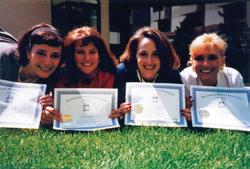
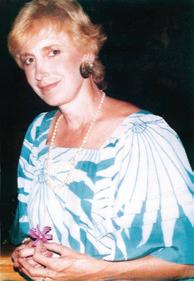
 Kirsten Miller-Zisholz (MFS, MM) is the 3rd Vice President and oversees the Ratings Committee
Kirsten Miller-Zisholz (MFS, MM) is the 3rd Vice President and oversees the Ratings Committee
Registered COACH CORE CERTIFIED ACCREDITED COACH LEVEL 1 ACCREDITED COACH LEVEL 2 ACCREDITED COACH SENIOR ACCREDITED COACH MASTER ACCREDITED COACH HIGH PERFORMANCE ACCREDITED COACH MENTOR Certified COACH CORE CERTIFIED ACCREDITED COACH LEVEL 1 ACCREDITED COACH LEVEL 2 ACCREDITED COACH SENIOR ACCREDITED COACH MASTER ACCREDITED COACH HIGH PERFORMANCE ACCREDITED COACH MENTOR Senior COACH CORE CERTIFIED ACCREDITED COACH LEVEL 1 ACCREDITED COACH LEVEL 2 ACCREDITED COACH SENIOR ACCREDITED COACH MASTER ACCREDITED COACH HIGH PERFORMANCE ACCREDITED COACH MENTOR Master COACH CORE CERTIFIED ACCREDITED COACH LEVEL 1 ACCREDITED COACH LEVEL 2 ACCREDITED COACH SENIOR ACCREDITED COACH MASTER ACCREDITED COACH HIGH PERFORMANCE ACCREDITED COACH MENTOR MARCH/APRIL 2024 4 RATINGS & RECOGNITION
“Tell me and I forget, teach me and I may remember, involve me and I learn.” - Ben Franklin
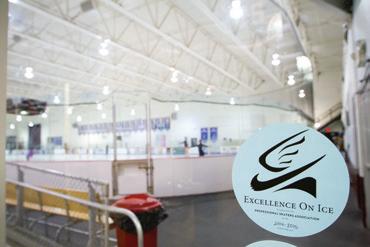

Basic Accreditation
Courtney Heath
Reagan Klohr
February 2024 | Ratings
Laura Baker MG
Aimee Buchanan MFS
Sara Buck-Lalonde SG
Jessica Chism SD
Erin Egelhoff MFS
Michael Farrell RFS
Phoebe Flynn RTOI
Tammy Jimenez SSS
Inna Kuznetsova RG
Meg Lemler RG
Darlene Lewis SSS
Kelsey Listerman SSS
Heather Ludin
Rebecca Michaud
Emily Zieman
Jeannette McGowan RG
Elizabeth Misson RTOI
Laura Patterson MFS
Allye Ritt RFS
Alexis Slack SSS
Maddi Spletter RSS
Maura Sullivan Hill RG
Jane Taylor SG
Kathryn Vaughn SSPD
Melissa Wilkens RSS
Ashley Wyatt SPD
Master Rating Achieved
Hockey Skating 4
Michael Farrell
Foundations of Coaching Course 2024 Participants
Shawnee Appell
Kelsey Blake
Abby Beckstead
Joycelyn Brown
Connie Budiwarman
Grace Calhoun
Carol Cole
Aubrey Collignon
Megan Connolly
Annie Corts
Morgan Creech
Michael Farrell
Isabelle Ferreira
Aurora Fowler
Drury Fulcher
Hanna Fussman
Kate Gallagher
Amanda Griffin
Mackenzie Hackney
Courtney Heath
Alyssa Henderson
Addison Hibbard
Brenda Hicks
Sydney Hoevel
Laura Kasinof
Viktoriia Kostenetska
Kailee Kujawski
Jeannette McGowan
Elizabeth Misson
Morgan Monaco
Ice Den Chandler
Chandler AZ
Ice Den Scottsdale
Scottsdale AZ
World Arena Ice Hall
Colorado Springs CO
Martha's Vineyard
Vineyard Haven MA
Coach Aimee Skating Academy
Lake Hiwwatha NJ
ONYX Suburban Skating Academy*
Rochester MI
Palm Beach Skate Zone
Lake Worth FL
Palm Beach Ice Works
West Palm Beach FL
Rochester Figure Skating Club
Rochester, MN
The above are progressive training facilities dedicated to excellence in coaching both on- and off-ice.
www.skatepsa.com
*Meet an EOI rink on page 7
RANKINGS
• Suna Murray Level 6 Singles
Shayne Orologio
Jessica Ott
Eva Paulson
Liz Penny
Lerah Pfeiffer
Laura Pursell
Suzanne Quigg
Julia Reichelderfer
Read more on page 14
Hockey Skating 1
PS MAGAZINE 5
To Skid or Not to Skid
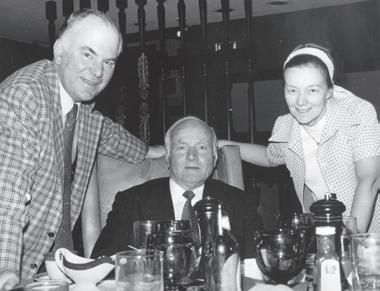 By Robert Ogilvie, MFF, MP, MG, MPD, SD
By Robert Ogilvie, MFF, MP, MG, MPD, SD
f observations made of the 2010 Olympics are anything to go by, the technique of using a long skid into the double and triple Axel takeoffs may now be undergoing reappraisal. I must emphasize that the conclusions drawn are my own personal opinions based on the use of a now somewhat hard to obtain but very useful VCR with a frame by frame shuttle. Also included in this article are the results of two excellent biomechanical papers written some years ago.
The performances viewed consisted of eleven men and ten women singles skaters—the total televised. Only one (Florent Amodio) used the long skid approach! The remainder replaced the skid with a sharply curving forward outside (FO) edge whose dimensions can only be estimated but seemed to be of an arc measuring about one third of a circle having a radius of possibly between four and five feet. Jumps using the curving FO edge without skidding could therefore be said to have clean takeoffs thus bringing the technique in line with other edge-to-edge jumps, except that the takeoff is forward, and because of the asymmetrical construction of the foot the blade must pivot at the moment of takeoff. The sharpening of the curve has a similar but reduced effect on the takeoff edge to that of the skid since it lessens the straight line linear speed of the skater.
Over the years what has occurred is that the skid when used has become shorter and shorter. There are two reasons why this has occurred. Some years ago attention was brought by certain authorities to the depth of hollow used for free skating. Hitherto, it had been very difficult to get skaters interested in the hollow they were using: they always said, “I leave it to the sharpener”—very unwise as few sharpeners had ever skated. (I myself did all the sharpening for my local pupils.) Suddenly everyone was convinced that a radius of hollow of 3/8 inch was the way to go. This is rather deep (I had always used a radius of 5/8 inch), but 3/8 of an inch was frequently used by traveling show skaters who wanted their sharpening to last and often had difficulty finding a good sharpener. Also blades directly from the factory tended to have rather deep hollows.
The problem was that it is quite difficult to make the blade skid using a radius of hollow as deep as 3/8 inch radius which frequently took a skater by
“Some years ago a pupil of mine rushed toward me for a comment, did a skid stop, caught the side of her boot on the ice and knocked me flat. She did not do it again.”
surprise when he or she used it for the first time. At the takeoff of a double or triple Axel the blade would fail to skid as expected and continued on a curve while the skater’s center of gravity attempted a flatter curve as though the blade were skidding. As a result his or her foot went one way and their center of gravity another, causing a wild tilt out of the circle with the skater finishing up on all fours. This was known as a “waxel” (a wipe-out Axel)—a common occurrence at the time, and one that a coach cannot ask his pupil to repeat for the camera! I was fortunate, however, in having had the opportunity of taping two of these disasters during a regular TV program of skaters’ practice sessions and was able to study the waxel carefully. So skaters made a virtue of necessity and wisely learned to avoid the skid and use a relatively clean edge takeoff.
The big disadvantage of the long skid is that it is based on the false analogy of the high jump in which the athlete plants his take-off foot firmly on the ground to take advantage of his linear motion by converting it into a vertical tangential force. However, when the athlete plants his foot it stops dead whereas when a skater tries to do this on the ice the blade skids and the greater part of the force is dissipated—taken to its absurd limit, he or she will simply stop. There is also the danger that the skater may bring the outside of the boot into contact with the ice, with a disastrous result. I believe this is what happened a year or so ago when one of the ladies took off, apparently intending to do a double Axel, but aiming it toward and too close to the barrier. Realizing this she leant back too much, attempted a skid and probably caught the side of her boot on the ice. This lifts the blade off the ice causing a serious fall that
MARCH/APRIL 2024 6 EDUCATION
sent her crashing into the barrier. I personally have direct experience of this. Some years ago a pupil of mine rushed toward me for a comment, did a skid stop, caught the side of her boot on the ice and knocked me flat. She did not do it again.
The skid could still be used successfully if it were shortened to no more than about 12 inches. At this length it would approach more closely the instantaneous stop of the planted foot of the high jumper.
Let us see what the biomechanists have to say on the subject. Two very important papers have been written: “A Kinematic Comparison of Single, Double, and Triple Axels” (King, Arnold, and Smith, 1994) and “Takeoff Characteristics of Single and Double Axel Figure Skating Jumps” (Albert and Miller, 1996). These papers examine nearly all quantifiable details of the Axels with special attention paid to the skid. The average length of the skid into the Axels performed by six male skaters is 1.1 meters for the double and 1.2 meters for the triple. Another authority, Dr. Dědič in the original edition of “Single Figure Skating,” gives the length of Don Jackson’s skid into his open Axel as 1.0 meter. Nevertheless, the problem of the deep hollow inhibiting the skid still remains.
The above is not a criticism of the articles; they did an excellent job of analyzing the methods of the skaters provided, but changes were already taking place. Nevertheless, under favorable circumstances the short skid is still a valid technique and was used by Mao Asada in her triple Axels.
Here is an interesting quote from the King et al paper: “However, taking off without skidding requires considerable skill and leaves little room for misstep.” Certain skaters now seem to be acquiring this skill when conditions are favorable.
Reprinted from January/February 2011 PS Magazine



Highlights

ONYX-Suburban Skating Academy and Suburban Ice Rochester
EOI facility since 2019
Being designated as an Excellence On Ice facility by the PSA is a point of pride for us. It signifies our dedication to excellence in coaching, both on and off the ice. With 100% PSA members on staff, each with personal liability insurance, we prioritize professionalism and safety. Our commitment to obtaining or maintaining a rating in our chosen discipline reflects our ongoing pursuit of improvement. This recognition not only sets us apart as a top-tier training facility, but also offers national exposure through PS Magazine, reinforcing our commitment to excellence in the eyes of the community and industry.
What makes your rink standout?
Our ice rink stands out for its unwavering commitment to safety, exceptional coaching, continuous improvement, and innovative programing. Actively engaged with the community, we have been recognized as having one of the largest Learn to Skate programs in the nation. Skaters will experience top-tier training and a dynamic, secure environment at our rink.
At our ice facility, we prioritize and invest in our coaching team’s professional development. Each season, we provide our dedicated coaches with a membership and education stipend, ensuring they have access to valuable resources and opportunities for growth within the Professional Skaters Association. This commitment not only enhances their expertise, but also reflects our dedication to maintaining the highest standards of coaching excellence on and off the ice.
How do you encourage harmony and goodwill?
We promote harmony, goodwill and ethical behavior by fostering open communication, setting clear expectations with a code of conduct, and organizing regular meetings. Open lines of communication, education, and recognition of achievements further contribute to a positive atmosphere, ensuring a respectful and supportive environment for skaters, parents, coaches, and rink personnel.
 Denise Williamson (MFS, MM, SFF, CC) is the chair of PSA's Education Committee.
Denise Williamson (MFS, MM, SFF, CC) is the chair of PSA's Education Committee.
Board of Governors
Nominees
Eastern Section Nominees
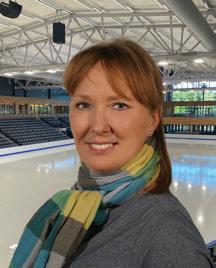
Kim has been a PSA member and coach for over 30 years, she is Master Rated in Skating Skills, Free Skating and Group as well as Certified Program Director. She serves as a PSA Area 2 Representative as well as an examiner, presenter and Study Group Leader. Kim is currently on staff at the Skating Club of Boston, Campus manager of the Learn to Skate Academy program as well as director of her own program at an outdoor rink that serves my local community. She also serves as an official with US Figure Skating as a Technical Specialist.
Kim began skating like many, at her local club's Learn to Skate program and fell in love. She was lucky to be at a strong club with a good program with wonderful coaching and a vibrant active community. She went on to train in Denver and the famed Broadmoor in Colorado Springs. All of those great coaches inspired and mentored her as she began her coaching journey — encouraging her to join the PSA and later to pursue Ratings exams. That journey led her to where she is now as well as meeting some of the best people in the business.
Per the PSA bylaws, this year the Mid-West and East Coast seats were up for election to the Board of Governors. Ballots were emailed to Professional-tier members mid-February and voting concluded February 22. The elected individuals will be announced shortly. Thank you to our worthy nominees and members that took time to vote.

Nicole has been an active member of the PSA for 12 years. She has been choreographing and coaching at the national and international levels for singles, dance, and TOI. She believes an important part of her job as a master rated coach is to give back to the coaching community as a PSA rating examiner. She strives to help motivate coaches to continue their education through the ratings process and other PSA educational opportunities. A source of pride stems from the pandemic when she volunteered her time to participate as a mock exam candidate so that they move to virtual ratings over Zoom became possible. As a nominee for the PSA Board of Governors, Nicole hopes to continue and expand giving back to the coaching community as others have done for her.
Kimberlie Wheeland
MM, MFS, MG, CPD
Nicole Z. Engel
MC, MSS, CTOI, RF
MARCH/APRIL 2024 8
Mid-Western Section Nominees

Jonathan has been a PSA member and coach for over 21 years. Jonathan began skating at the age of 6 and his competitive career included both freestyle and pair skating, earning two US National medalist titles, three USFS Regional Champion titles, and a US Collegiate National medalist title.
Jonathan is a PSA triple master-rated coach with master-ratings in free skating, skating skills, and group, and also carries ratings for Certified Ice Dance, Certified Program Director, and Registered Pair, as well as PSA Hockey Skating Certification Level 2. Jonathan has mentored multiple coaches through earning their master ratings and currently serves as the Group Discipline Chair on the Ratings Committee. He has volunteered as a rating examiner, seminar presenter, rating study group leader, Foundations of Coaching Course instructor, and he is a published PSA content author. He has five years' skating program director experience and has coached all disciplines he is rated in, with students including a Regional Champion, a US National Showcase Medalist, and multiple Disney On Ice soloist performers.
Jonathan currently coaches at the Arctic Figure Skating Club in Canton, Michigan, is married with an 11-year-old daughter, and manages a successful insurance business. He is also a US National Ballroom Dance National Medalist and competitor.

Roxanne has been a PSA member and coach for over 30 years, she is Master Rated in Program Director, Group, Skating Skills and Senior Dance as well Certified Figure and Free Skate. She also holds a Level 2 Ranking and Level 2 Hockey Certification. Roxanne served as a Virtual PREP faculty, FCC faculty and evaluator. She served on the rewrite team of the Group and Program Director rating exams. She serves as a PSA Area 12 Representative as well as an examiner. Roxanne is currently the Skating Director of Moylan Iceplex and the Blade & Edge Figure Skating Club.
Roxanne began skating in her hometown of Omaha, NE and quickly knew this was going to be her passion. She was blessed to have wonderful coaches that helped develop her not only into a skater, but also into a person. The relationships with the great coaches led her to coaching Learn to Skate for the club, leading to starting the journey of coaching. Following in the footsteps of her coaches, they encouraged her to join PSA and to pursue the path of Rating exams. The journey of being a member of the PSA and taking Rating exams is where she is now and is passionate about giving back to the PSA.
Jonathan Hayward
MFS, MSS, MG, CPD, RP
Roxanne Tyler
PS MAGAZINE 9
MPD, MG, MSS, SD, CFF


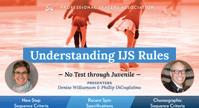
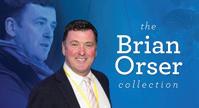

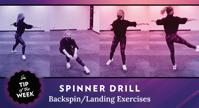
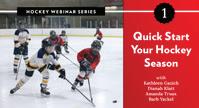
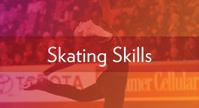






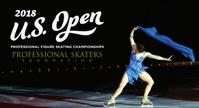



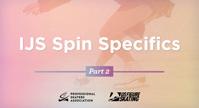


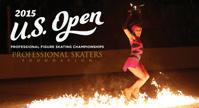

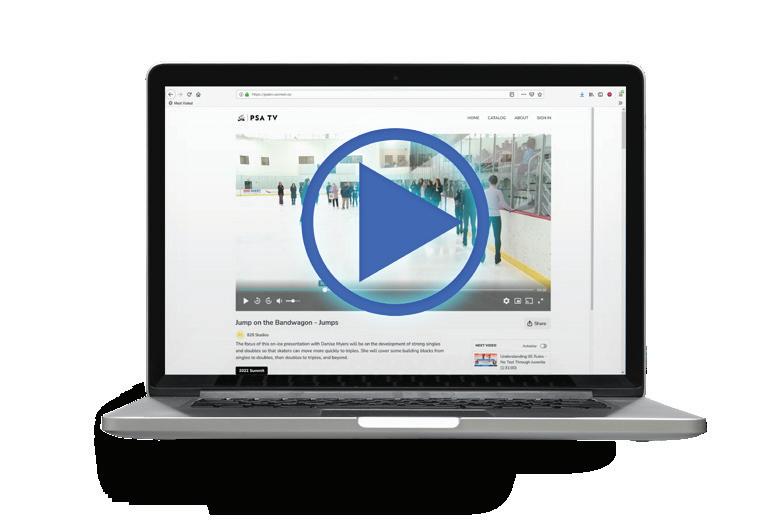
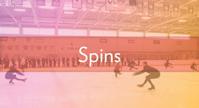









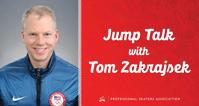
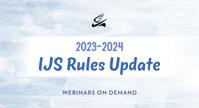

Need credits?
A valuable video library of information from past webinars, seminars, conferences, summits, and tips from master coaches. www.skatepsa.com
PSA Credit.*
must be submitted
the
*Exclusions
Each video viewed is worth 1
Affidavits
listing
name of the video/webinar and the date you viewed.
apply


Miami Skating Coaches DeGirolamo, Shoker Set to “Pass Torch” and Step Down Following 2023-24 Season
OXFORD, Ohio—Miami University synchronized skating head coach Carla DeGirolamo (MS, RD) and assistant coach Lee Ann Shoker (MS, RG) have announced that they will step down from leading the program following the 2023-24 season to each pursue new endeavors.
Both products of the program during their undergraduate years, the duo have combined for 39 years on the RedHawk synchronized skating staff. DeGirolamo’s coaching stint at Miami spans 21 years, including the last 15 as head coach. Shoker is in her 18th season on staff with the program.
“It has been an honor and a privilege to be a daily part of this program for the past 25 years as both a student-athlete and coach,” said DeGirolamo. “I will always treasure the relationships, memories and opportunities afforded to me as a part of the Miami Skating family.
“This decision was not an easy one and involved much thoughtful consideration for both me and also for Lee Ann,” she continued. “I know in my heart that it is time for me to ‘pass the torch’ and move on to new endeavors and opportunities and to contribute to the sport in a new capacity. Miami Skating is in a great place, and I am confident it will continue to flourish through this transition and beyond.”
Following a decorated four-year career as a skater for Miami from 1999-2002, DeGirolamo spent seven seasons as an assistant coach in the program under former long-time head coach Vicki Korn and assumed the reins of the program in June 2009 following Korn’s retirement.
Over the course of her time with the Miami coaching staff, the RedHawks have won a combined 16 national championships and qualified for the World
Championships nine times, achieving a silver medal with Team USA in 2007, the first medal finish at the World Championships by a U.S. team and the highest finish at the event by a U.S. team. She also helped the collegiate team to a record-breaking string of 12-consecutive national titles from 2005-2016.
Shoker is in her 18th season with the Miami Synchronized Skating program and her 16th as an assistant coach. During her time on staff at Miami, Shoker has helped coach seven RedHawk senior teams that qualified for the World Championships, including the 2007 World Silver Medalists and the 2009 National Championship team. She also has helped the collegiate team win 13 national titles—including a large part of the record-breaking string of 12 national titles—as an assistant coach.
“It is with gratitude and a full heart for all I have learned and been given through Miami Skating that I look in a new direction away from coaching full time,” said Shoker. “To have been coached by Vicki Korn and Bonnie Grosel as an athlete, be a part of our first national championship Junior Team, a member of our first Senior Team and then compete representing Team USA, including the first World Challenge Cup was truly remarkable. I cannot express the growth that has come from working alongside such highcaliber coaches, both personally and professionally.
“I was never able to thank Vicki enough for welcoming me home in 2006 and helping me find my way when I was unsure what path to follow. Coaching alongside Carla has been a friendship and mentorship that not only pushed both of us, but also Miami Skating. I feel very lucky to have her to count on and hope I have proven to be just as trusty to her.
“I think of all of the other coaches that have helped us along the way. Kelley Morris-Adair is a mindblowing technician who can make the most difficult concepts of physics understandable to our studentathletes, moving them along the pathway of skill mastery! Katie Bowling—while no longer on the ice daily—is so invested in both the staff and the teams, bringing joy, insight and humor to all that she does. Other great coaches have been with us on and off the ice along the way. Lana Kay Rosenberg has provided me another language for movement and sound effects to match! Our trainers, strength coaches and support staff over the years have truly kept the wheels turning as they will continue to do.
Miami Athletics is currently pursuing an international search for the synchronized skating coaching positions.
SEEN & HEARD PS MAGAZINE 11
Text and diagrams by Christie Allan-Piper
Nature repeats a good design. The Fibonacci or diminishing curve is found everywhere, in spiral galaxies, hurricanes, sea shells, pine cone—and the entrance into skating spins, two foot, one foot, forward and back (camel and flying spins excepted).
The figure skate is a precision instrument that carves its way to a circle’s center. There the skater circles, as if tethered to an invisible pole anchored to the center of the earth, rising to the sky.
The ice marks tell the tale. A spin entrance, like the curve into a school figure loop, is proportional to the skater’s height. For both loop and spin, the curve is key. After passing the long axis, the curve becomes so tight, the body must either resist the center’s pull, looping around it, or allow the skate’s forward motion to be arrested and spun. As the skate turns, the free leg releases, swings round and the spin begins.
A great spin leaves the mark of concentric circles no larger than a dinner plate. Spins traveling slightly, not along on a line, but a platter, merely require adjustment. Some sagging body part, elbow, hip, or shoulder needs alignment.
A chain of small loops veering off a previously centered spin is evidence of the helicopter or tornado effect, lifting the mass off its moorings. Usually this pull can be resisted by pressing down shoulders, arms, free leg, and—importantly—the free foot heel, keeping the spin secure and fast.
A straight line of never centered loops indicates a three and spin begun too soon, before the skater passed the long axis and approached the center, in fact missing it altogether. The premature spin careened outward, away from the pole. Impatience and frisky free foot are culprits here. Telltale marks bespeak of a spin so wrong, it should have been stopped. A runaway spin is a danger to the spinner and all nearby. A skater must be taught to correct or abort at once. Shame on any coach who allows such a spin to be practiced!
For the forward spin, the free leg must be held back,

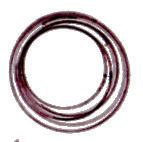

Not quite ideal


behind the heel of the skating foot, until the curve is so small, the blade turns involuntarily. Then the free leg releases with force to make its own circular path around the center.
For the back spin entered by a forward inside edge, the free leg must be held in place, somewhat back, but inside the circle rather than behind the heel of the skating foot. In due course, the body rotates to face
Ideal
Spin on a plate
WORTH SHARING AGAIN MARCH/APRIL 2024 12
Spin on a platter
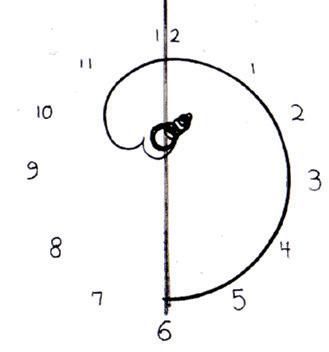
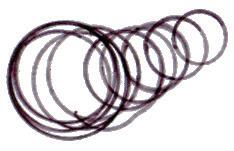
Tornado effect
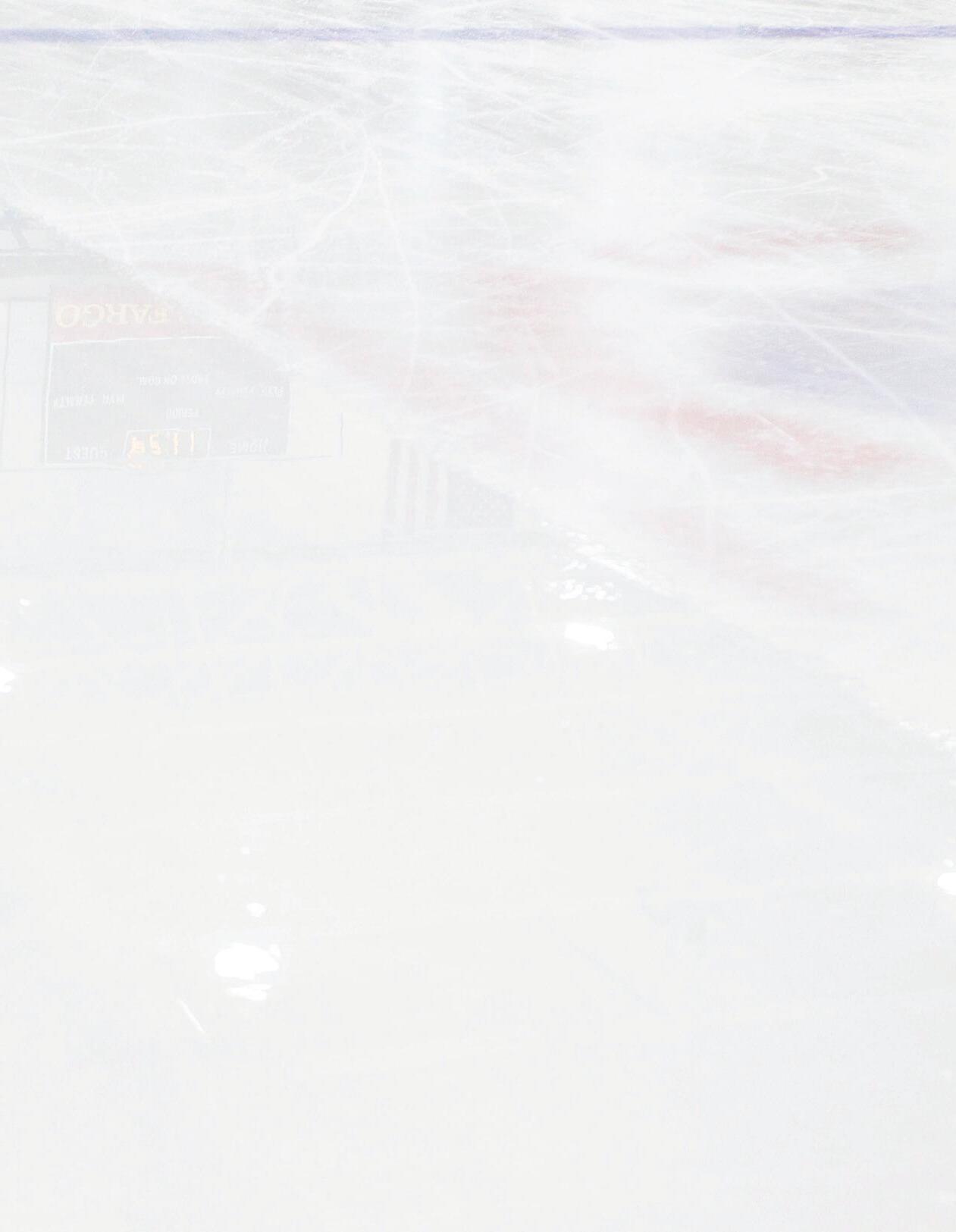
the foot, turns the three and spins.
Forward spin or back, the Fibonacci curve is the same, never cut short, free leg restrained, until it no longer can be. At the turn, the free foot releases to swing with a force of a circular sling shot.
For the upright forward spin, hands and elbows are best held shoulder level, curved slightly forward, as if hugging a gradually shrinking tree. The great spin master, Gus Lussi kept forearms horizontal as they tighten and draw back close to the ribs. Like plane wings and sailboat booms, their horizontal force balances the vertical mass. (Strong skaters can manage vertical forearms, but weak skaters wobble.) Finally the arms, free leg and heel press downward against the body in a burst of speed.
The back spin begins with free arm strongly forward, skating arm strongly back and low, ready to punch up and inward, a swift upper cut as the spin begins. Again drawing in, forearms are most effective kept horizontal, hands flat, one above the other, thumbs hooked, elbowsz pressed against ribs, until straightening and pressing down flat against the body.
In change foot spins, each outward cut of the departing foot makes another Fibonacci curve. The mark of a well centered spin, with many changes of feet, resembles a pinwheel or spiral galaxy. When changing feet, one places the new foot on the rim of the wheel opposite the departing foot, one foot leaving as the other foot arrives.
Coming and going, feet must be parallel and apart. Skaters with open (spread eagle) hips must concentrate on turning the free foot inward. In transition, a turned out foot is as much impedance to a spin as an open door on a moving car. Toed in, blade parallel to the ice, the free leg offers least resistance to the air. Molding extremities to the line of flight, in this case circular, maximizes aerodynamics.
The spin is important for its own beauty and for the foundation and daily warm-up it offers jumps. Once





spins are centered, the body is ready for airborne spins. But spins offer even more. In a chaotic world, the Euclidian design and logic of spins is reassuringly certain.
As in the eye of a storm, in a spin’s center, is stillness. Within an invisible, circular chamber, one feels the pull of centrifugal and centripetal forces in concert. Tethered to the invisible pole, one becomes a conduit between earth and sky, balanced amid the forces of the universe.
A spin can be read, understood, mastered. Centering spins, we learn to balance ourselves. Centering carries over to jumps and life, itself. The world may spin around us, out of control, but in it we can—must— hfind our balance and hold it strongly.
For more than fifty years now, I have done spins almost daily. Each one has been a meditation, exploration, revelation—a serene and hallowed moment.
Reprinted from Nov/Dec 2011 PS Magazine
PS MAGAZINE 13
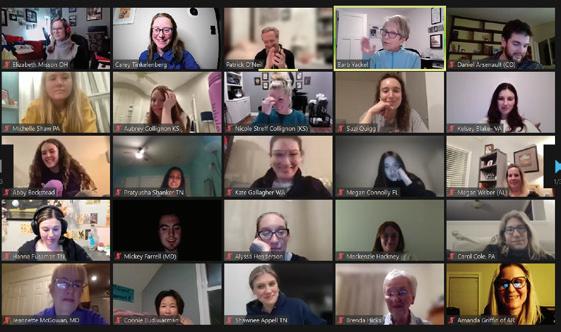
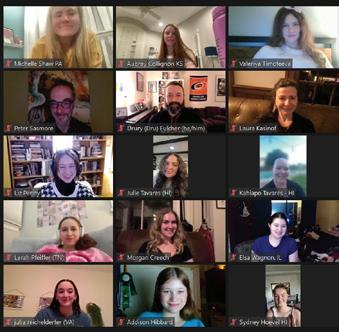
Thoughts From the Faculty

Carey Tinkelenberg (MPD, MG, MM, SFS) and Patrick O'Neil (MM, MFS) recently wrapped another successful Foundations of Coaching Course. We asked them to reflect back on their involvement with the course and here's what they had to say:
“We strive to create comradery and community among coaches... to watch coaches with a great deal of experience interact with other coaches is inspiring.”
It's been a wonderful experience to co-facilitate this virtual course over the past few years. One thing that's always struck us is the variety of experience levels among the coaches who participate. Each time we've offered the FCC, we've enrolled aspiring coaches-to-be, brand new coaches (both younger athletes and adult skaters!), master rated, long-time career coaches and directors, and everything in between. The exchange among coaches is always the highlight. How many opportunities do we have in this field to intentionally set aside time for learning, problem solving, sharing experiences, and reflecting in a structured way, while covering a broad range of educational topics? Each time we host the course, we all come away with new ideas and resources, as well as a deeper and broader community of coaching peers. The future is bright! PSA is grateful for our valued faculty members, presenters, and participants!
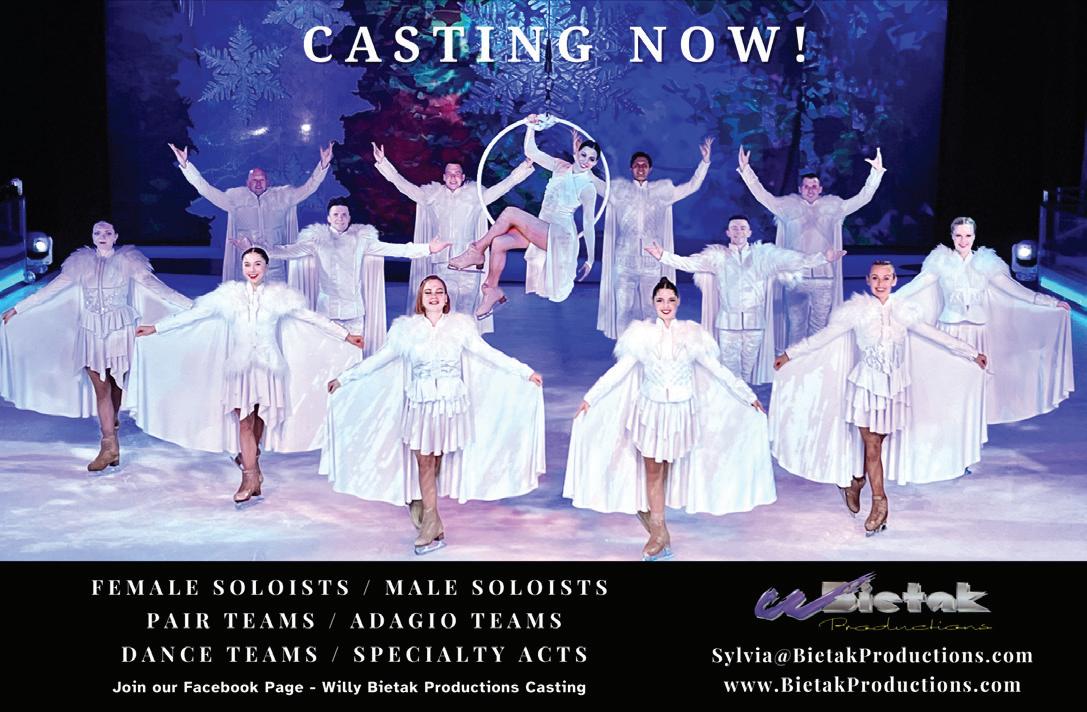
MARCH/APRIL 2024 14
•
•
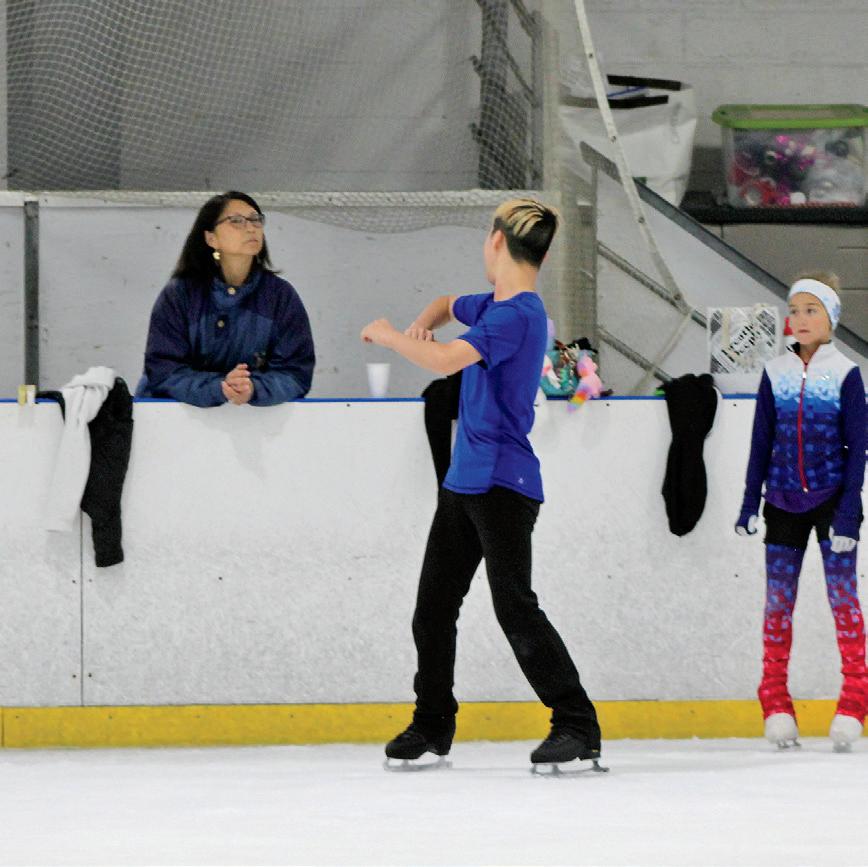
ABOUT US
For more than 50 years, Fairfax Ice Arena has offered year-round indoor public ice skating, and recreational and competitive figure skating programs, a Pro Shop and a cafe. The rink continues to have first-rate, world and nationally renowned coaches and competitive skaters. We are proud to be the home ice rink of the Skating Club of Northern Virginia.
Fairfax Ice Arena is located only 12 miles from Washington D.C., in Fairfax County, Virginia, one of the wealthiest county in the United States.

OUR PROGRAMS
• More than 58 figure skating sessions each week during fall, winter, and spring
• A 10-week Summer Training School
• Ballet and Off-Ice Training Studio
• Jump harness on- and off-ice
• Our program has developed Olympic, World, National, Sectional, and Regional ranked skaters
REQUIREMENTS
• A minimum of 3–5 years coaching competitive figure skaters and/or
• A National or International competitor as a singles senior level skater and/or
• A principal show skater at a reputable show production
FAIRFAX ICE ARENA 3779 Pickett Road, Fairfax, VA 22031 703-323-1132
JOIN OUR COACHING STAFF
www.fairfaxicearena.com
Guaranteed a base salary of
Relocation allotment offer
$75,000–$125,000 •
Paid Vacation Days Email your resume and skating video reel links to General Manager Todd Martin at tmartin@fairfaxicearena.com.
The Importance of Warming-up Before Going on the Ice
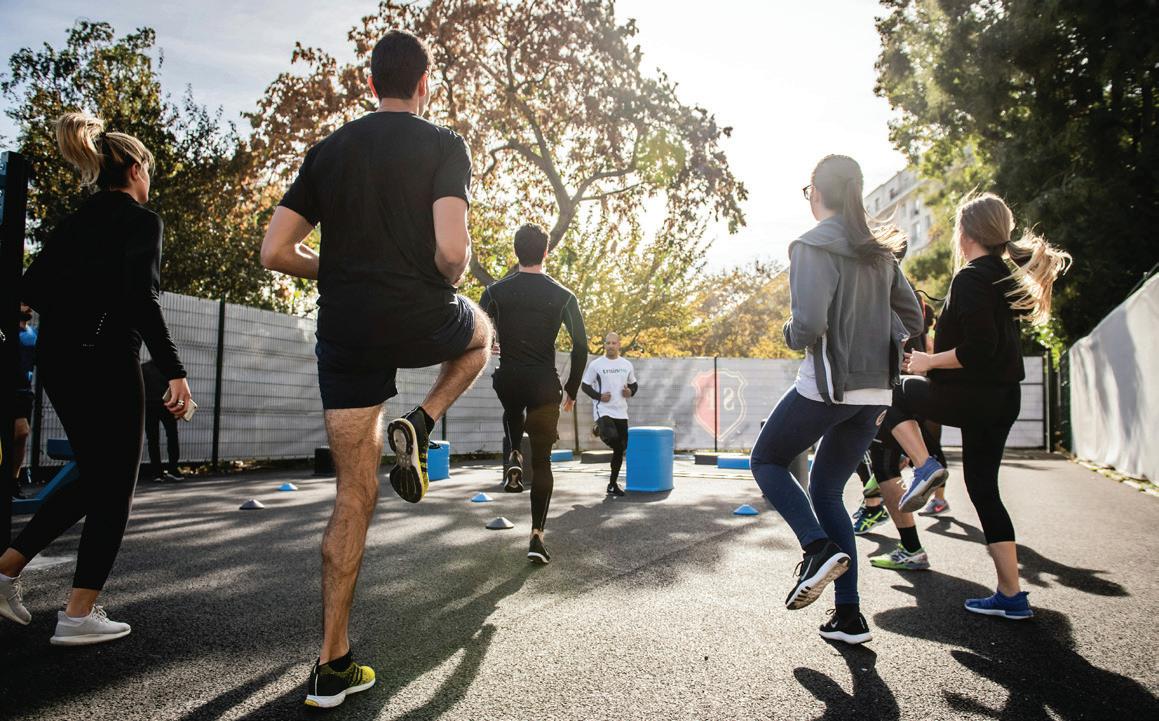 By Benoit Duboscq
By Benoit Duboscq
We all know that figure skating is a very challenging sport that requires physical and technical skills. As a result, it is very important to prepare the body before going on the ice. Interestingly, the word triple jump is also used in track and field, when the athlete has to land repeatedly on one leg during their training. To my knowledge, there is no sport other than figure skating and track and field when the athlete has to master landing on one leg. Figure skating requires speed, power, flexibility, fine motor coordination, and aerobic/anaerobic capacities. As a result, it can be very challenging to perform if the athlete’s body is not prepared to train at the maximum potential.
When I was the assistant athletic trainer at a sports medicine clinic working with a team of doctors and physical therapists, Michelle Kwan, Evan Lysacek, Timothy Goebel and many other elite skaters were coming to get treatments and train with us. I remembered that our main goal was to educate the athletes and to find ways to prevent injuries. As a trainer, I soon realized that the warm-up was one of the most important components of training to prevent injuries and improving skating performance. It was always hard to see the athletes missing days, weeks, and months of training due to preventable injury.
It should be noted that a well executed warm-up plays a role not only in preventing on-ice impact injuries, but also facilitates recovery. A good
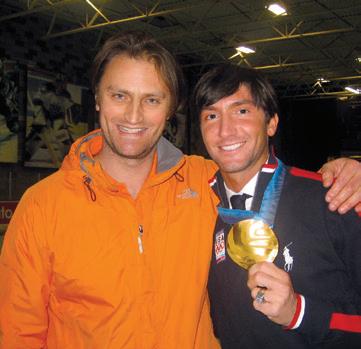
warm-up assures that the athlete has reached an optimal mental and physical state to perform on the ice, which in turn, guarantees more effective restoration processes between the training sessions. In other words, the higher the performance level, the quicker the athletes will recover.
What type of stretching is safe during the warm-up?
Since the primary aims of the warm-up are to decrease the possibility of injury and to achieve the highest level of performance on the ice, the chosen method of warm-up should best prepare the athlete during skating sessions. Dynamic stretching (butt kick, skipping, high knee run, carioca, etc.) has been suggested by many sports scientists, physical therapists, and athletic trainers as the main technique of stretching in the preparation of high speed sports and power activities like figure skating. While dynamic stretching is recommended as the main technique of stretching before high speed sports, it is important to note that a warm-up which utilizes static stretching would make an athlete stop and sit before going on the ice in which may result in decreased body temperature which is not ideal before jumping. Too much passive stretching (with the help of a partner, stretch bands, or mechanical devices) or static stretching during the warm-up might not only
MARCH/APRIL 2024 16
Benoit Duboscq with Evan Lysacek
Example of a “dynamic” warm-up before going on the ice:
Formula A:
• 3 minutes easy jogging
• 1 minute jumping jacks
• 20 butt kicks, 20 high knees, 6 skips and repeat
Formula B
• 3 minutes easy jogging
• 2 to 3 minutes easy jump rope (30 sec on, 30 sec off)
• 20 high knees, 20 pack pedals, side shuffles, and repeat
increase the potential of injuries, but also decrease speed and power which will have negative effects on on-ice jumps and sports performance.
What are the benefits of an “active” warm up?
• To prevent impact related injuries and muscle strains
• To prepare your muscles for optimum jumping efficiency
• To help your body to recover faster for the next training session or competition
• An increase in blood supply
• Optimal mental and physical state to perform the programs
• Muscles respond more quickly and powerfully
• To improve range of motion, decrease muscle soreness, and relieve joint stress
• To improve jumping performance
• Muscle stiffness is reduced
When should skaters perform static stretches?
Static stretching is controlled, passive movement taken to the point of first resistance; once the tissue barrier is identified, the elongated muscle group is held for at least 30 seconds. This form of stretching is considered low risk due to the low force and controlled tension applied. Static stretching can be used as a warm-down (after skating activity sometimes referred to as “cool-down”) to accelerate sports recovery. Recovery is the process of returning all body systems and to prepare the muscles for the next day. A warm-down should involve a continuous decrease in cardiovascular activity like passive stretching. Re-hydrating and refueling immediately after training sessions or competitions can also help the athlete to recuperate more quickly. When excess lactic build up is removed by this activity, muscle stiffness is reduced. The reduction in metabolic wastes allows muscles to recover rapidly after sessions and competitions. Just as a good warm-up assures that
the skater has reached an optimal mental and physical state to perform on the ice and can assure a faster recovery, a good warm-down, which includes static stretching, can also accelerate the recovery process as soon as the training session is over, and help to restore the athlete’s state of mind.
Conclusion
Dynamic stretching is the preferred technique when it comes to warming up. Recent studies have shown that traditional static stretching techniques do little to increase flexibility or reduce injuries when performed before a workout, in fact studies show that static stretching can have a detrimental effect on explosive movements and speed strength output. As one would expect, dynamic activities that require movement, such as running, jumping, and rotating, stress that the dynamic receptor is more beneficial when preparing for a warm-up prior to going on the ice. Dynamic stretching also includes constant motion throughout the warm-up which maintains the core temperature, whereas static stretching can see a drop in temperatures of several degrees. Another benefit of dynamic warm-up is that it prepares the muscles and joints in a more specific manner as the body is going through movement patterns during the skating sessions. It also helps the nervous system and motor ability because dynamic motions do more to develop those areas than static stretching. Static stretching decreases body temperature, which is not ideal before jumping. While many studies show the lack of benefits of static stretching before a workout, there is still much data to support the benefits of static stretching after the workout as a recovery means.
We understand that time can be challenging when your students get out of school until they get to the rink and ready to skate, but would it be beneficial to spend a small amount of time (eight to ten minutes) of a consistent dynamic warm-up before going on the ice? If this is done ritually, it could make a big difference at the end of the year. Not only will your athletes be able to perform at a higher level during sessions, but they will also be mentally and physically more prepared to reach their goals and stay healthy.
If you want your students to recover faster, prevent injuries, and jump higher, warming up prior skating might be a wise choice. It is our responsibility to educate our athletes on how to perform at their best!
About the author: www.benoitduboscq.com Benoit is a multidisciplinary high performance strength coach who has coached multiple Olympic medalists and World champions. He is part of the U.S. Figure Skating network of sports science and medicine specialists and collaborates with the United States Olympic Committee Strength & Conditioning division to serve Team USA and the USOC High Performance division.
Reprinted from March/April 2013 issue of PS Magazine
PS MAGAZINE 17

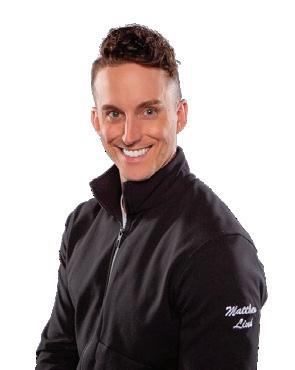


New MEMBERSHIP COURSE COMING APRIL 1! Coaching Group Lessons by Jonathan Hayward Register for free in the Online Store and access the course in your E-Learning account.
with Flying Spins March 20 & 27
Matthew Lind
PART WEBINAR Join us as we examine the basic mechanics of how flying spins work and provide valuable tips and tricks to help your athletes achieve the best flying spins. Register now via the Event Calendar at skatepsa.com 2 PSA Credits
has 20+ years of coaching experience of all levels ranging from beginners to world competitors. He currently serves on the Coaches Committee and is a National Singles Technical Specialist for U.S. Figure Skating. MARCH/APRIL 2024 18
Flying
Presenter
2
Matt


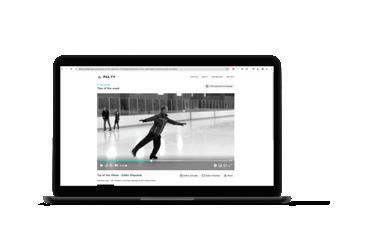
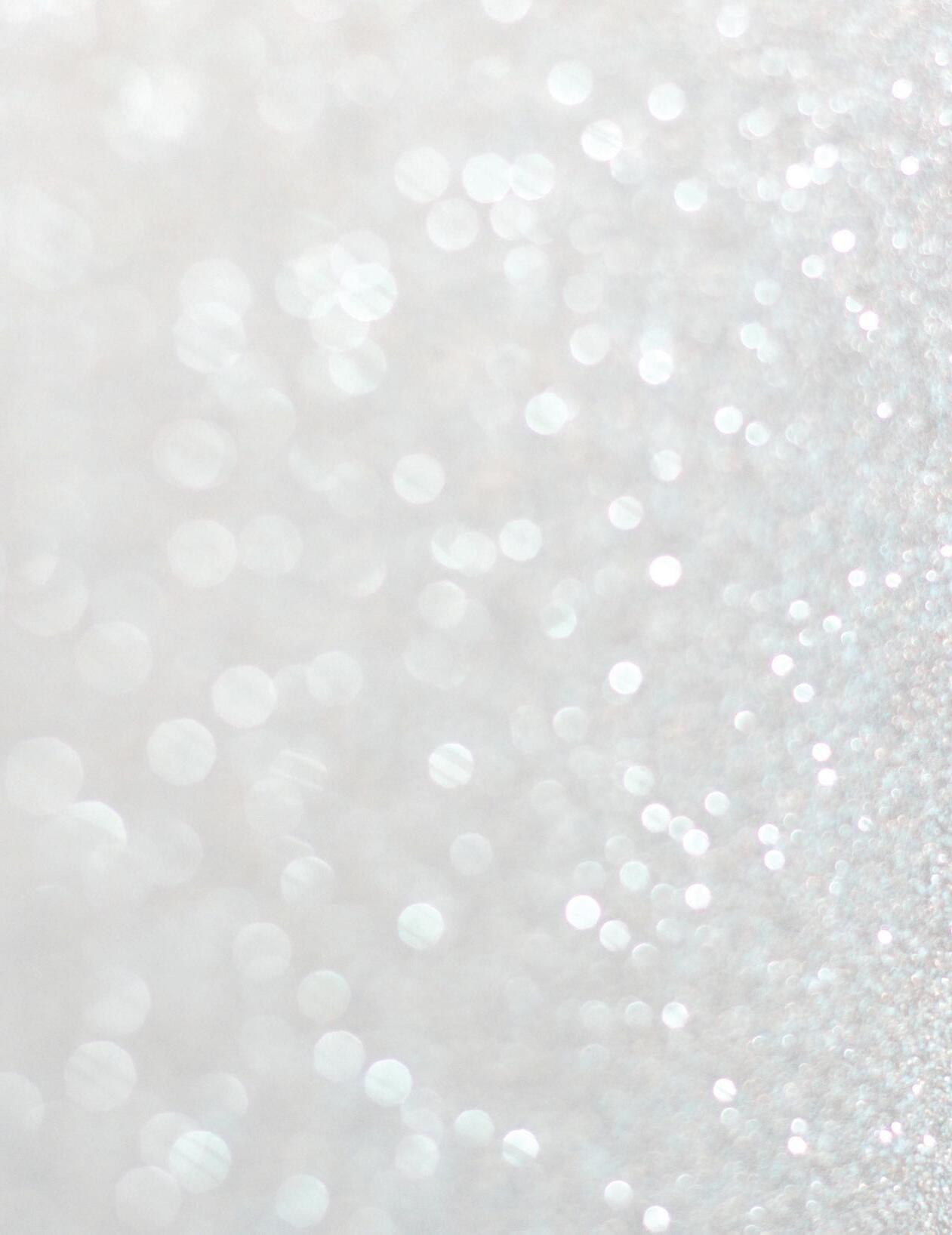

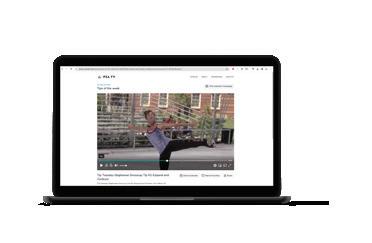
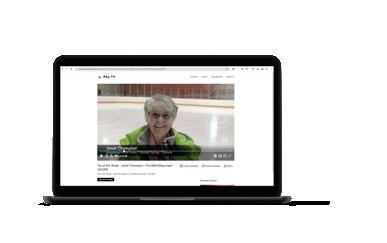
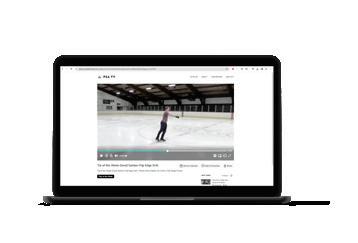

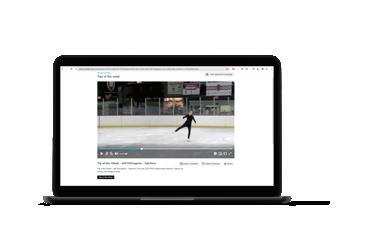

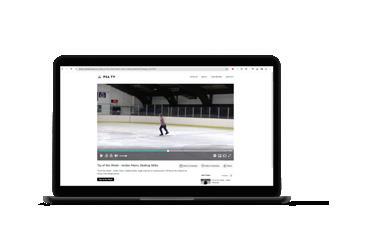




Make every day a Tip Tuesday free View the Tips of the Week catalog for quick insights from sport pros.
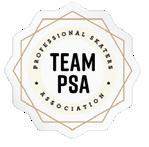
calendar
MARCH
Event PSA Virtual Membership Meeting
Date March 7, 2024
Credits 1 PSA Educational Credit Register at www.skatepsa.com
Event Flying Spins – 2 Part Webinar
Date March 20 & 27, 2024
Credits 2 PSA Educational Credits Register at www.skatepsa.com
APRIL
Register for the June Rating event March 8th at 9am!
Event Virtual Ratings Exams – all disciplines and levels
Date April 12-14, 2024
Credits 1 PA Educational Credit
MAY
Event May Virtual Ratings - All levels and disciplines except Synchro & Figures
Date May 10-11, 2024
Credits 1 PSA Educational Credit
Event PSA EDI Awards Dinner
Date Thursday May 16, 2024
DoubleTree Colorado Springs, CO Register at www.skatepsa.com
JUNE
Event June Virtual Ratings – Certified through Master Levels – All disciplines except Synchro & Figures
Date June 6 & 7, 2024
Credits 1 PSA Educational Credit Registration opens March 8 at 9am CST
For the most up-to-date Calendar of Events, visit www.skatepsa.com

Do you follow us on Facebook or Instagram?
Enjoy this peek back in our archives and follow us for more!
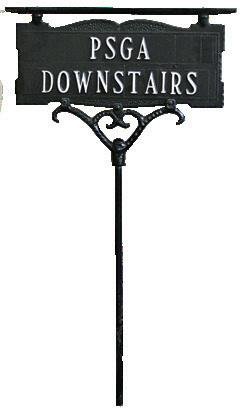

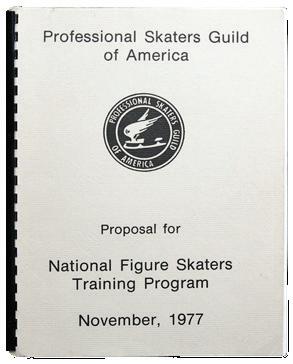
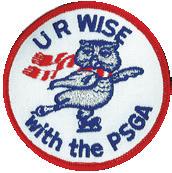

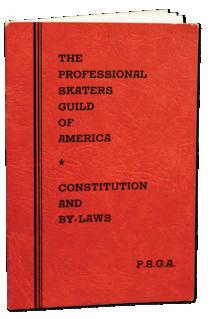
full
full
MARCH/APRIL 2024 20

New Members
NEW MEMBER SPONSOR
Abby Beckstead
Chelsea Bickford
Kelsey Blake
Isabell Boekelman
Kaylynn Boswell
Joycelyn Brown
Grace Calhoun
Annie Corts
Morgan Creech
Skye Espinal
Emma Favreau
Isabelle Ferreira
Maggie Fipps
Aurora Fowler
Judy Frothingham
Hanna Fussman
Kate Gallagher
Penelope Gomez
Dulce Gomez
Addison Hibbard
Sydney Hoevel
Christina Kamme
Viktoriia Kostenetska
Addyson Luke
Elise Mackin
Candace Marshall
Rachel Matos
Abigail Mazieres
Ava Min
Morgan Monaco
Daniela Montes de Oca
Meredith Parr
Priscilla Partridge
Ashley Wyatt
Melissa Emerson
Jill Stewart
Barb Yackel
Chanel Hicks
Brock Huddleston
Paula Trujillo
Brock Huddleston
Barb Yackel
Margarita Tyler
Courtney Alsdorf
Barb Yackel
Barb Yackel
Paula Trujillo
Deborah Crawford
Paula Trujillo
Barb Yackel
Luis Arrieta
Barb Yackel
Paula Trujillo
Brock Huddleston
Barb Yackel
Barb Yackel
Jennifer DeMarco Buchholz
Johanna Jackson
Candice Tamakloe
Barb Yackel
Debi Leeming
Barb Yackel
Paula Trujillo
Luis Arrieta
Barb Yackel
Melissa Emerson

NEW MEMBER

Charlotte Patton
Eva Paulson
Tristan Pond
Maria Loretta Puente
Julia Reichelderfer
Kathleen Rivers
Pratyushsa Shanker
Joelle Simpson
Francesca Snyder
Leah Sopko
Jodi Speece
Juliette Tavares
Alyssa Thornsbury
Eréndira Toledo
Brooklyn Tomczak
Jennifer Visconti
Sarah Whelan
Christina Wong
Barb Yackel
Barb Yackel
Barb Yackel
Barb Yackel
Jill Stewart
Barb Yackel
Paula Trujillo
Debbie Minter
Paula Trujillo
Barb Yackel
Marylill Elbe
Kahiapo Tavares
Paula Trujillo
Luis Arrieta
Barb Yackel
Barb Yackel
Barb Yackel
Barb Yackel
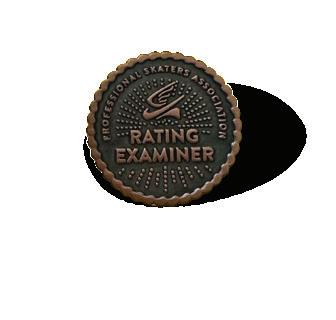
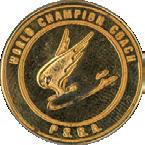


Team PSA is made up of: ssroots coaches rating examiners full-time coaches learners Area Representatives creatives program directors Thanks for making our team so special. my name
is
PS MAGAZINE 21


A PUBLICATION OF THE PROFESSIONAL SKATERS ASSOCIATION 3006 Allegro Park Lane SW Rochester, MN 55902 2023 Photo of the Year Finalist by Michael Martineau For the coaches. The Professional Skaters Foundation was founded to expand the educational opportunities of PSA members through a non-profit, charitable foundation. Visit skatepsa.com for more information. All contributions are tax-deductible. It's easy to donate via PayPal! A Community that Cares





























 Kirsten Miller-Zisholz (MFS, MM) is the 3rd Vice President and oversees the Ratings Committee
Kirsten Miller-Zisholz (MFS, MM) is the 3rd Vice President and oversees the Ratings Committee


 By Robert Ogilvie, MFF, MP, MG, MPD, SD
By Robert Ogilvie, MFF, MP, MG, MPD, SD



 Denise Williamson (MFS, MM, SFF, CC) is the chair of PSA's Education Committee.
Denise Williamson (MFS, MM, SFF, CC) is the chair of PSA's Education Committee.






























































 By Benoit Duboscq
By Benoit Duboscq






































